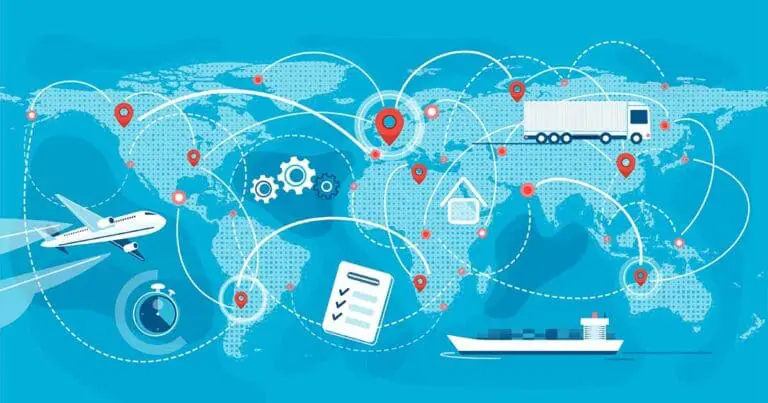Adapting to Rapid Technological Change in the Workplace

Technological advancements continue to accelerate, reshaping industries and redefining the ways we work.
This fast-paced transformation brings both exciting possibilities and significant challenges, as companies strive to stay competitive and employees adapt to new tools, platforms, and processes.
To harness the potential of these shifts, organizations need proactive strategies that support the adaptation process and ensure they have the right teams in place to leverage change for growth and innovation.
Successfully navigating technological change can unlock a company’s full potential, positioning it for long-term success in an evolving market.
What is technological change in the workplace?
Technological change in the workplace refers to the introduction and integration of new tools, systems, and processes aimed at enhancing efficiency, productivity, and innovation.
This transformation can span across various domains, from operational improvements to customer service advancements.
Embracing technological innovation has become essential for organizations to remain competitive, as the workplace adapts to trends such as automation, data-driven insights, and collaborative digital platforms.
Examples of technological change in the workplace
Examples of technological change in the workplace include AI in recruitment and hiring, telehealth services in healthcare, Robotic Process Automation (RPA) in finance, and machine learning in marketing analytics.
Artificial Intelligence in recruitment and hiring
Artificial Intelligence (AI) is revolutionizing recruitment by automating screening processes, enhancing candidate matching, and supporting unbiased hiring practices.
With AI, companies can efficiently sift through resumes, rank candidates, and even conduct initial assessments.
This not only saves time but also helps organizations identify the best talent for specialized roles, ensuring a quicker and more effective hiring process.
Telehealth services in healthcare
The healthcare industry has embraced telehealth as a transformative technology, making healthcare services more accessible and convenient.
By offering virtual consultations, healthcare providers can reach more patients, reduce wait times, and expand services to remote areas.
Telehealth’s growth highlights the critical role of digital transformation in improving patient care and operational efficiency in healthcare.
Robotic Process Automation (RPA) in finance
In finance, Robotic Process Automation (RPA) is enhancing operational accuracy and speed by automating repetitive tasks like data entry, compliance checks, and transaction processing.
This allows financial teams to focus on more strategic work, such as data analysis and customer engagement.
RPA’s potential to streamline workflows is helping finance departments operate with higher productivity and fewer errors.
Cloud computing in data storage and collaboration
Cloud computing has become indispensable for data storage, remote access, and real-time collaboration.
It allows employees to access and share information securely from anywhere, supporting the shift towards flexible and hybrid work models.
The use of cloud-based tools for document management and team communication is a key factor in enhancing productivity across distributed teams.
Machine Learning in marketing analytics
In marketing, machine learning enables deeper insights into customer behavior, optimizing campaign strategies and targeting.
Through advanced analytics, companies can personalize marketing efforts and make data-driven decisions that drive results.
Machine learning applications in marketing are helping companies refine their strategies, maximize engagement, and increase conversions.
Augmented Reality (AR) in retail and e-commerce
Augmented Reality (AR) is reshaping the retail and e-commerce landscape by offering interactive, immersive shopping experiences.
From virtual try-ons to 3D product displays, AR tools allow customers to engage with products in a new way, boosting satisfaction and purchase confidence.
AR adoption in retail exemplifies how technology can enhance customer experience and differentiate brands in a competitive market.
How to adapt to rapid technological change in the workplace
To adapte to rapid technological change in the workplace, organizations and employers must understand the importance of adaptability, build a culture of innovation and flexibility, and assess and fill skill gaps to build the right teams.
Understand the importance of adaptability in today’s workplace
Adaptability is crucial in today’s fast-paced, tech-driven work environment.
As new technologies emerge, organizations that resist change risk falling behind, leading to inefficiencies and reduced relevance in their industries.
Embracing adaptability ensures that both employees and companies remain agile, allowing them to capitalize on opportunities that come with technological advancements.
Build a culture of innovation and flexibility
Creating a workplace culture that values innovation and flexibility is essential for seamless tech adaptation.
Encouraging experimentation and rewarding creative problem-solving can help employees feel empowered to explore new technologies without fear.
Open communication around tech changes fosters a supportive environment, making it easier for employees to adjust to evolving processes.
Assess and fill skill gaps to build the right team
Regularly evaluating skill gaps within the team is key to identifying areas where specialized expertise is needed.
Hiring strategically — whether on a full-time, contract, or freelance basis — ensures the company has the skills required to manage and implement new technologies.
Partnering with a staffing agency can streamline the process of finding skilled professionals who bring the latest competencies to support growth.
Train and upskill for continuous growth
To keep pace with ongoing technological changes, continuous learning should be a priority.
Training programs, including workshops, online courses, and certifications, help ensure that current team members stay updated on new skills.
Staffing agencies can be valuable resources in finding candidates with cutting-edge skills or providing upskilling opportunities that enhance the capabilities of existing teams.
Leverage new tools and technologies
Adopting tools like AI, cloud computing, and data analytics can transform workplace productivity and decision-making.
Carefully assessing and selecting technologies that align with specific company goals is vital for successful integration.
Hiring team members skilled in emerging tech can facilitate smoother adoption and maximize the impact of new tools on organizational performance.
Reduce tech-related stress
Rapid technological changes can often lead to stress and anxiety among employees, stemming from fears of job displacement or an overwhelming need to adapt quickly.
To manage this, phased rollouts and ongoing support are effective ways to ease transitions.
Leaders should approach tech changes with empathy, offering reassurance and resources to help employees feel supported through the adaptation process.
Set up long-term strategies
A long-term approach to tech adaptation allows organizations to plan and allocate resources effectively.
Setting clear goals and timelines ensures consistent progress, while identifying roles needed to lead adaptation—such as IT specialists, digital transformation officers, and project managers—can help guide the organization forward.
Staffing agencies can assist by sourcing candidates for these pivotal roles, supporting a sustainable approach to change.
How to adapt to change in your workplace
Embracing technological change with a well-prepared team brings significant benefits, from driving innovation to building future-ready capabilities.
Companies that proactively invest in upskilling and cultivate a culture of adaptability are better positioned to succeed in an ever-evolving digital landscape.
Partnering with a staffing agency can provide access to specialized talent and help organizations fill critical skill gaps, ensuring their teams are equipped to handle ongoing change and capitalize on new opportunities.
Looking to hire top-tier Tech, Digital Marketing, or Creative Talent? We can help.
Every year, Mondo helps to fill over 2,000 open positions nationwide.
More Reading…
- My Team Was Laid Off: Now What?
- Staffing Agencies vs Headhunters: What’s the Difference?
- Navigating the Latest SAP S/4HANA Upgrade and 2027 Deadline
- Marketing vs. Sales Enablement: Know Which One Your Team Needs
- The Rise of Digital Nomadism and Its Impact on Employers
- Employee Referral Programs: How to Build, Manage, and Streamline
- Why Big Tech is Turning to Nuclear Power for AI
- What is an Agile Workforce? Definition, Tips, and Benefits
- Remote Work Cybersecurity Challenges and How to Overcome Them
- 7 Strategies to Upskill Your Workforce in the Digital Age



